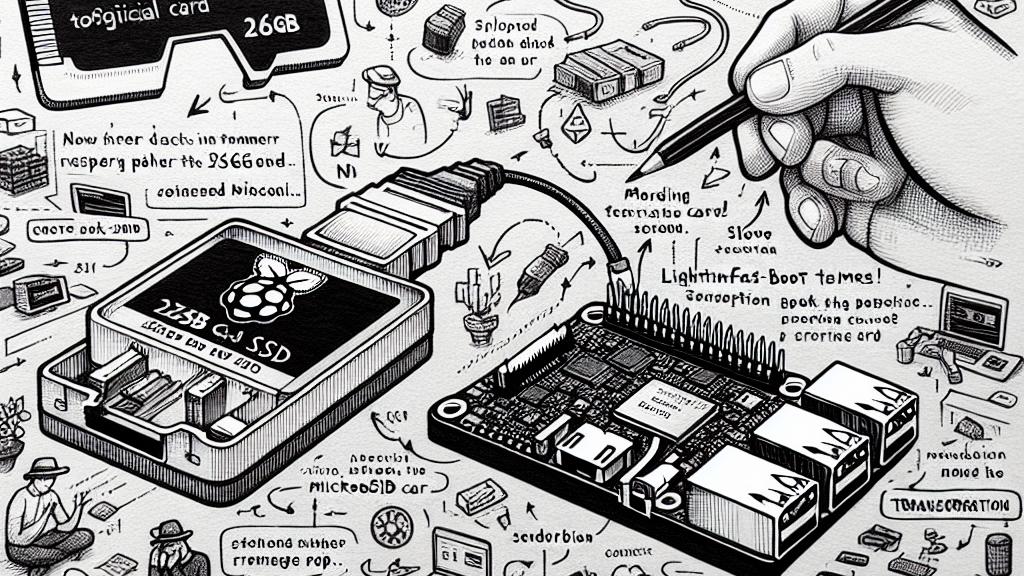Guide to Connecting Raspberry Pi 5 Official SSD as Boot Disk and SSD vs microSD Speed Comparison
Overview
- Unlock the full potential of your Raspberry Pi 5 by effortlessly setting up the official SSD as your boot disk.
- Dive into fascinating performance benchmarks that vividly illustrate the significant speed differences between SSDs and microSD cards.
- Discover valuable tips and methods to elevate the performance and optimize compatibility of your SSD with Raspberry Pi.

Introduction to Raspberry Pi SSD
Launched on October 23, 2024, the official Raspberry Pi SSD has quickly become a game changer in the world of compact computing. Imagine a 256GB storage device that not only expands your capacity but also supercharges the performance of your Raspberry Pi 5! Unlike traditional microSD cards that often restrict usability due to slower speeds, the SSD offers lightning-fast boot times and allows users to run bigger, more demanding applications. This innovation redefines what you can do with a Raspberry Pi, transforming everything from simple coding projects to advanced robotics into effortless tasks. Whether you’re a hobbyist or a professional, upgrading to an SSD isn't just a tweak; it's a revolution in your Raspberry Pi experience.
Setup Process for SSD Boot
Setting up the SSD as your boot disk is not just straightforward; it’s almost exciting! Start by mounting the Raspberry Pi M.2 HAT+ on your device, ensuring a snug connection for your new SSD. Then, with a few simple steps, you can transfer your operating system from an existing microSD card to your shiny new SSD using the SD Card Copier tool. Imagine the exhilaration as you power on your Raspberry Pi, select the copier, and watch the data transfer unfold like a seamless dance! After confirming that everything has copied successfully, you'll embark on the final steps—modifying the bootloader settings. With commands like 'sudo rpi-eeprom-update', you’ll set the SSD as the primary boot device. When you reboot, your Raspberry Pi will spring to life almost instantly, showcasing the true magnificence of SSD technology.
Comparing Speed: SSD vs microSD
Now, let’s talk numbers, because they tell a story worth sharing. Benchmark tests reveal a staggering difference between the speeds of the microSD card and the SSD: the SSD boasts impressive sequential read speeds that can hit over 804.39 MB/s with PCIe 3.0 configuration, while a typical microSD card barely scrapes the surface at around 90.11 MB/s. This isn’t just a technical detail—it’s a transformative factor! Picture yourself trying to load a large application or game; the SSD can do it in seconds, while you might be waiting nearly a minute with a microSD. This significant performance upgrade enables not just faster loading times but also smoother multitasking and enhanced overall efficiency. By making the switch to SSD, you open the door to a new world of possibilities, empowering every project with unprecedented speed and reliability. The change isn't just noticeable; it’s a remarkable leap towards a more capable, high-performance Raspberry Pi.

Loading...